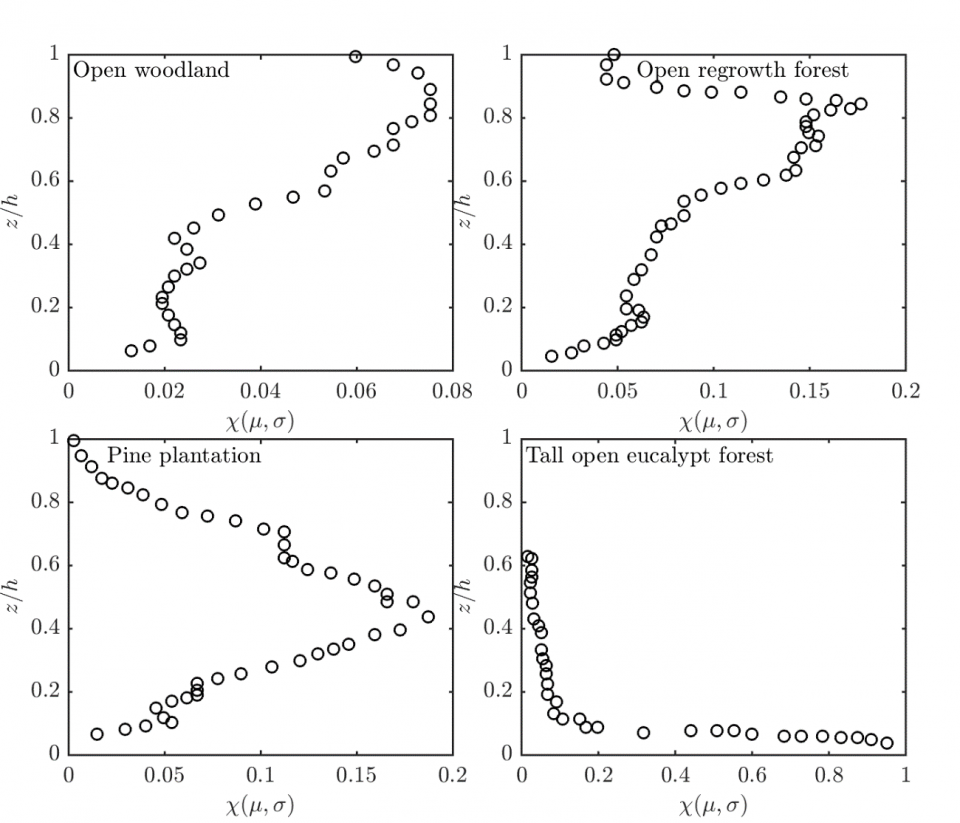
PUBLICATIONS
Published works

Simulations of the effect of canopy density profile on sub-canopy wind speed profiles
| Title | Simulations of the effect of canopy density profile on sub-canopy wind speed profiles |
| Publication Type | Report |
| Year of Publication | 2018 |
| Authors | Sutherland, D, Wadhwani, R, Philip, J, Ooi, A, Moinuddin, K |
| Date Published | 12/2018 |
| Institution | Bushfire and Natural Hazards CRC |
| City | Melbourne |
| Report Number | 442 |
| Abstract | In computational simulations for weather prediction and fire simulation, forest canopies are often modelled as regions of aerodynamic drag. The magnitude of the drag term depends on the Leaf-Area Density (LAD) of the forest. For most forests LAD varies strongly with height; trees typically have more vegetation at the top of the canopy than the bottom. S. Dupont, and Y. Brunet [Influence of foliar density profile on canopy flow: a large-eddy simulation study. Agricultural and forest meteorology, 148(6), pp.976-990. 2008] simulated the flow through three very different profiles of LAD measured from three different Canadian forests. K. Moon, T.J. Duff, and K.G. Tolhurst [Sub-canopy forest winds: understanding wind profiles for fire behaviour simulation, Fire Safety Journal, 2016] recently measured the sub-canopy winds and LAD for seven different Australian forest types. Large-Eddy Simulations (LES) of flow through idealised forests are now computationally tractable and an extensive systematic study of different LAD profiles is possible. Here we assume that the LAD can be modelled by a Gaussian with two parameters representing the mean and variance of the distribution of LAD. The total vegetation density is forced to remain constant as the profile changes. We present preliminary simulation results showing how the mean and variance of LAD affects the sub-canopy wind velocity and we discuss a potential modelling approach for sub-canopy wind velocity. |
Published Works


